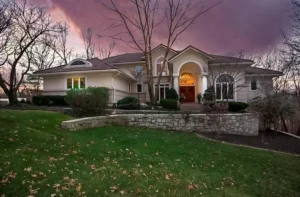The Economic Cost of the American Revolution
According to the Office of the Historian (the official historical agency of the U.S. Department of State), the American colonists spent approximately $100 million in 18th-century dollars to break away from King George III.
Adjusted for a three percent average inflation rate, that’s about $927 billion in 2025 dollars.
Conversely, Great Britain’s war expenses in the American Revolution was +/- £250 million. Today, that would tally £5.77 trillion.
The disparity between the two figures reflects the then-existing economic status of both sides, as well as how the war affected the two foes.
How the Colonists Funded the American Revolution
History Channel research shows the funding sources for the opponents. The Colonists’ war chest came from multiple sources:
- State-printed money (39 percent): States printed their own money for local militias. The fundraising initiative caused inflation, owing to a lack of backing by taxes
- Money printed by the Continental Congress (28 percent): The Congress printed paper money called Continental dollars. These depreciated quickly, as they were absent the backing of gold or silver
- State-issued debt certificates (14 percent): States issued war bonds, promising repayment with interest post-war
- Congress-issued debt certificates (10 percent): Similar to state-issued bonds but often issued to soldiers and suppliers, these certificates also depreciated quickly
- European loans (six percent): After the 1777 Battle of Saratoga (a decisive victory for the Colonists), loans from France, the Netherlands, and Spain became crucial. The U.S. later struggled with repayments until financial stabilization under the Constitution
- War bonds sold to Americans (three percent): Congress sold bonds to wealthy patriots, offering six percent interest; their risk, however, made them less popular
Great Britain’s war effort was paid for through taxation, borrowing and national debt. The financial setback that resulted held long-term economic repercussions for England.
From Revolution to Recovery: Building Fiscal Stability After the American Revolution
It took until the 1787 establishment of the U.S. Constitution to bring fiscal stability to post-Revolutionary America. The website The Sitrep reports that steadying initiatives for the early states came from the creation of:
- A common market
- Common currency
- A national bank
- Regulated trade and commerce
- A means of consolidating and funding the national debt
- Congressional authority to tax the population
Examples of What $927 Billion Could Buy Today
To gain an additional perspective on what the financial outlay for freedom means in terms of the current value of the dollar this Independence Day, consider that $927 billion can open the door to a truly epic July 4th holiday and beyond.
For example, with that kind of backing, revelers could:
- Provide enough 2′ x 3′ American flags to almost cover the state of New Hampshire.
- Purchase enough street hot dogs at $5 each to feed every U.S. citizen 1.5 franks every day for a year.
- Have the Boston Pops play patriotic tunes accompanied with fireworks three times per day, every day, for the next 1,685 years.
- Welcome 1.3 billion new Americans by covering the $760 U.S. citizenship application fee for each of them.
- Sign every single major and minor league baseball player to a $245 million contract.
- Buy enough apple pies to touch end to end across the circumference of the earth, every day for a year.



















